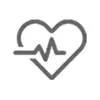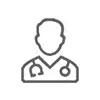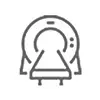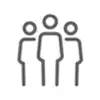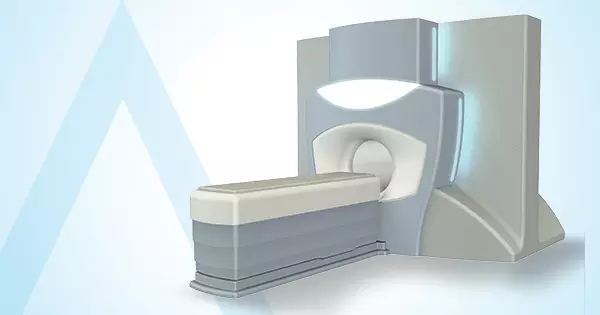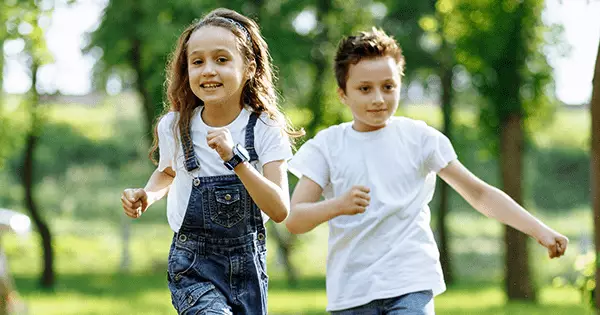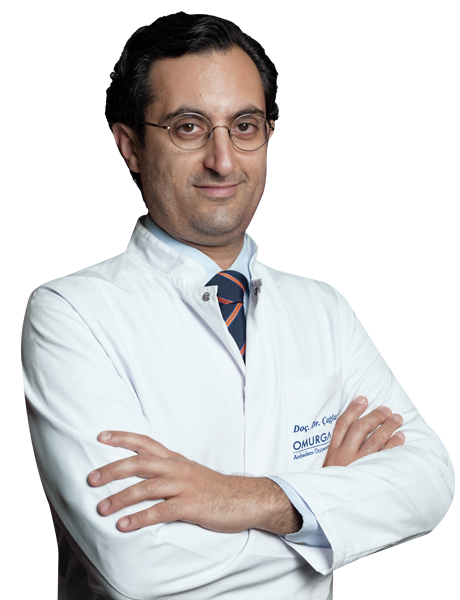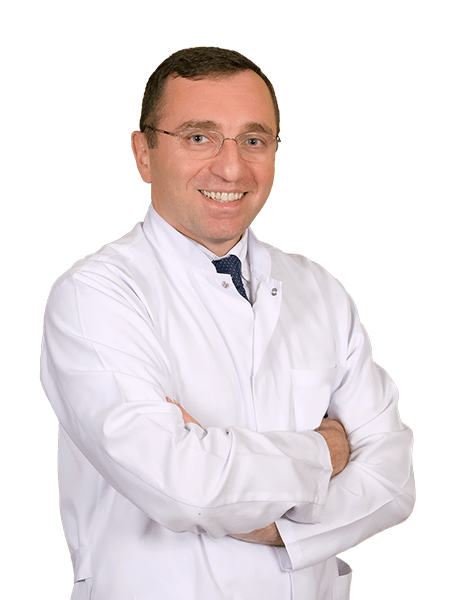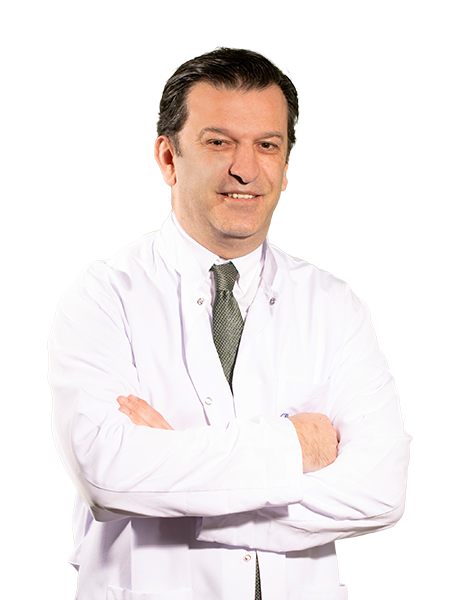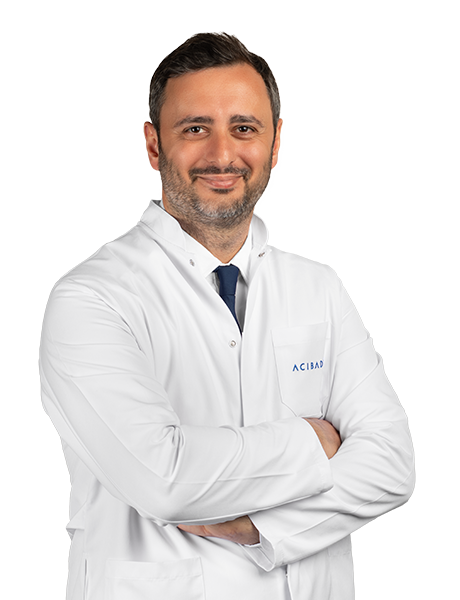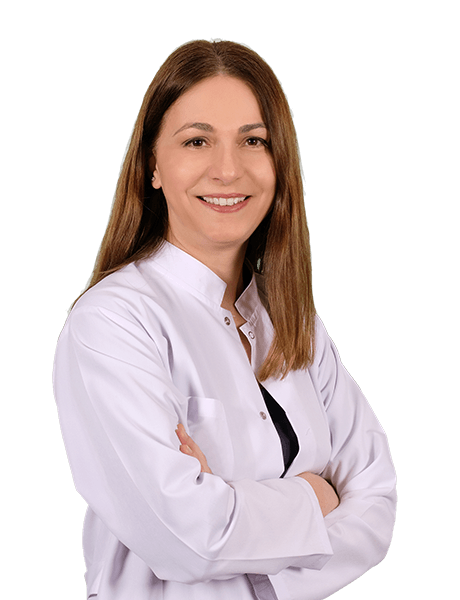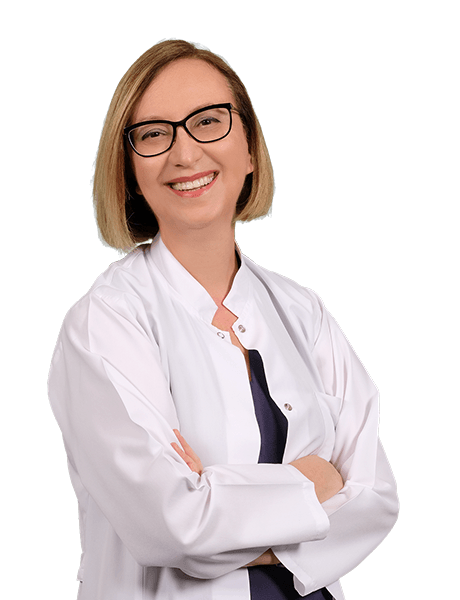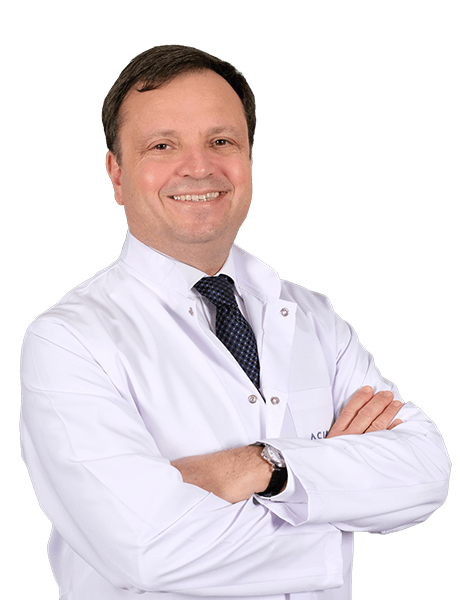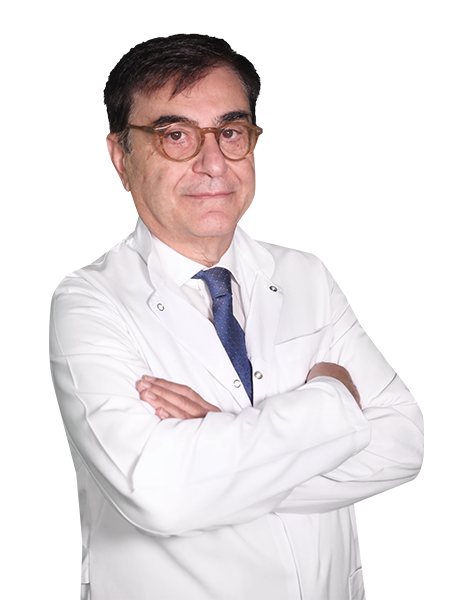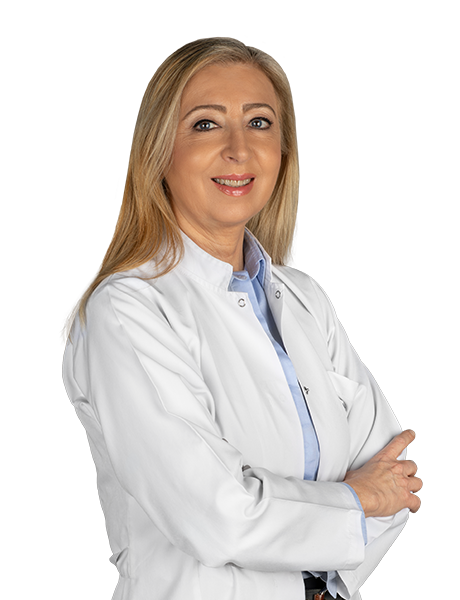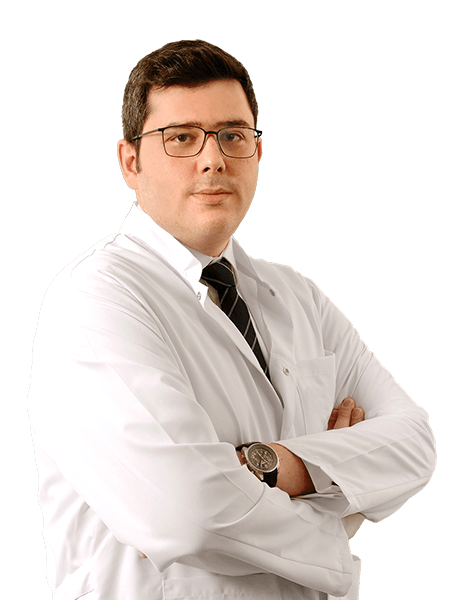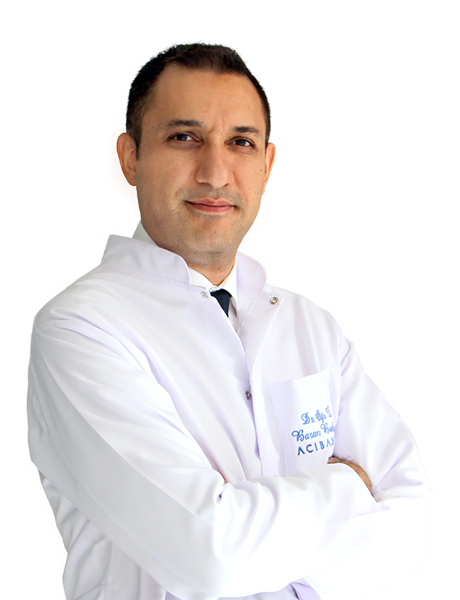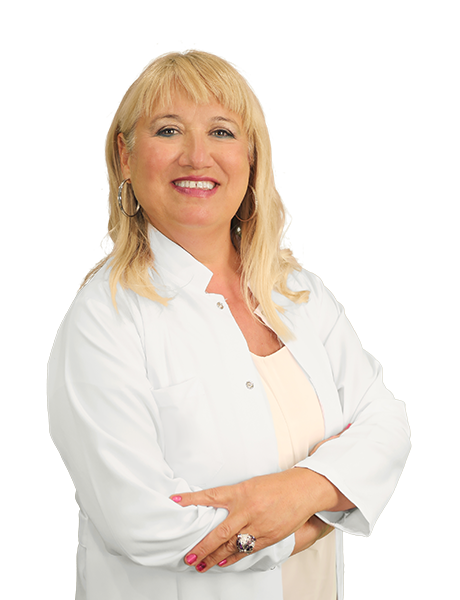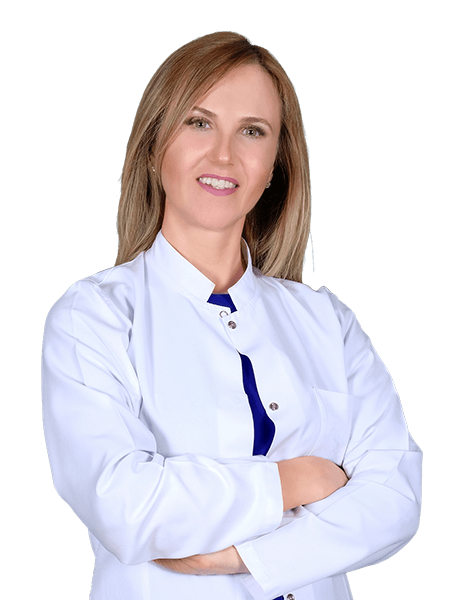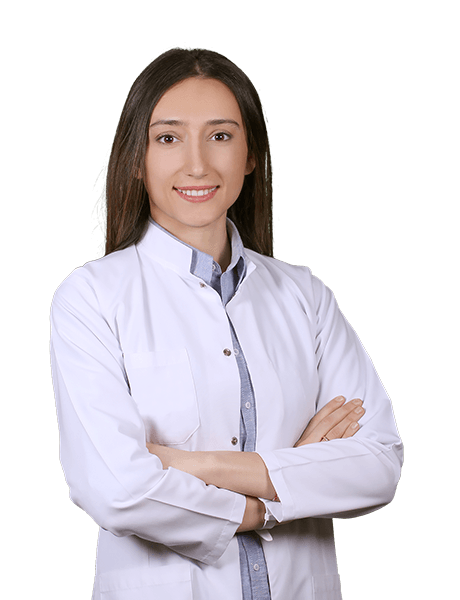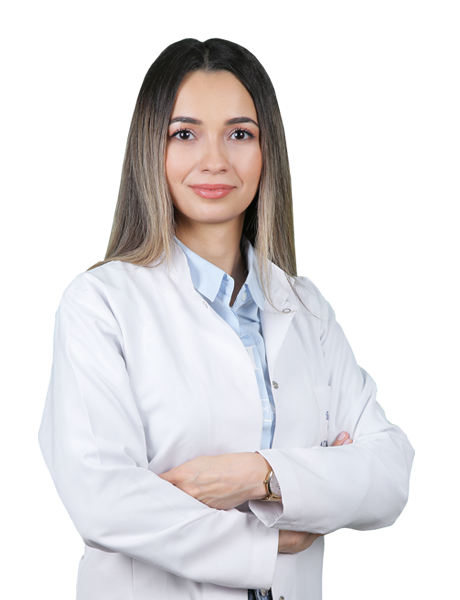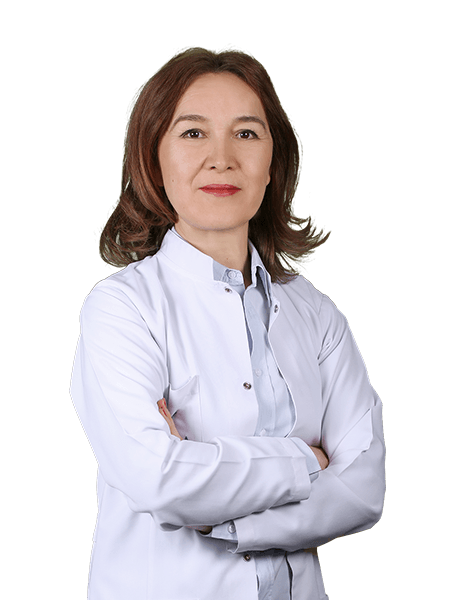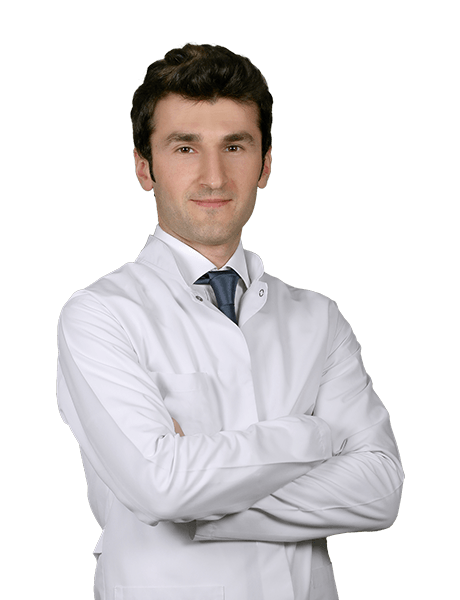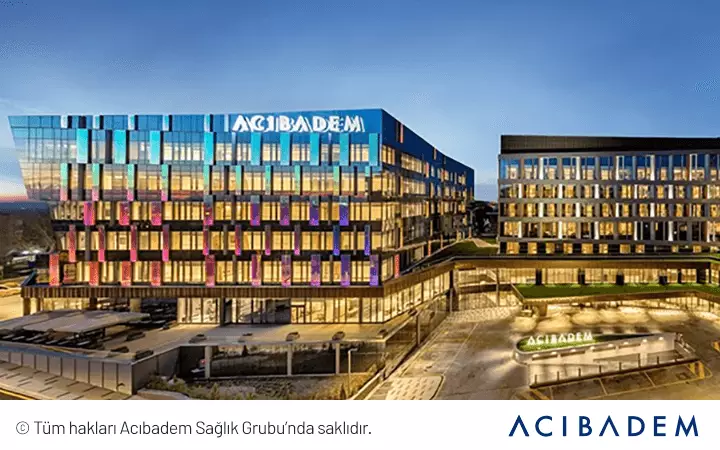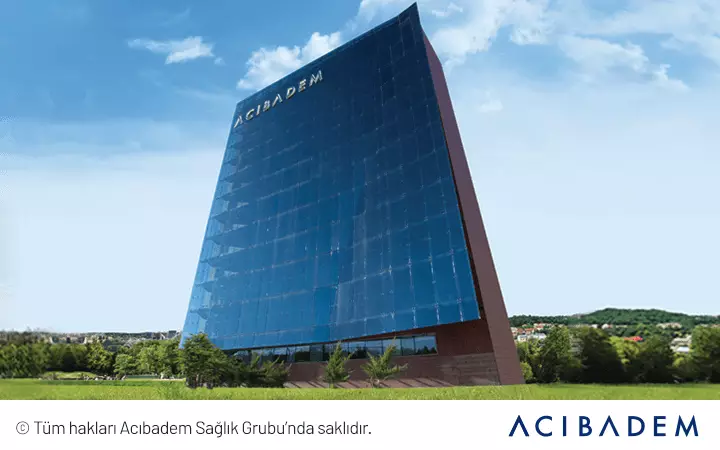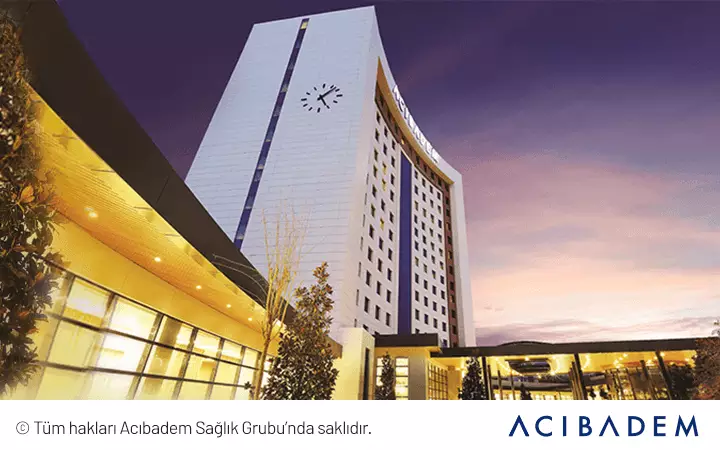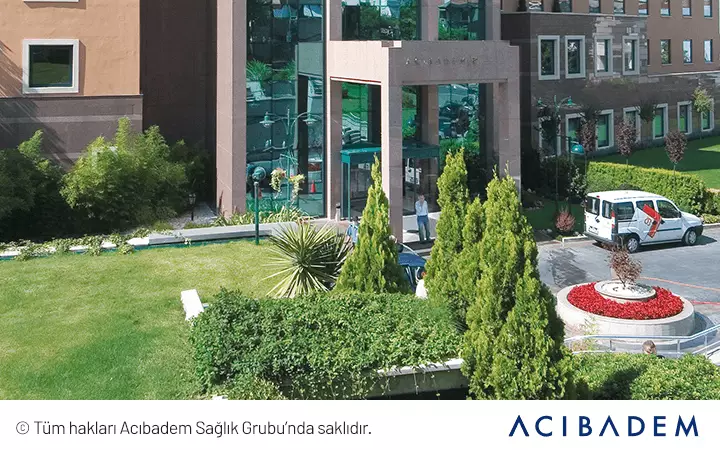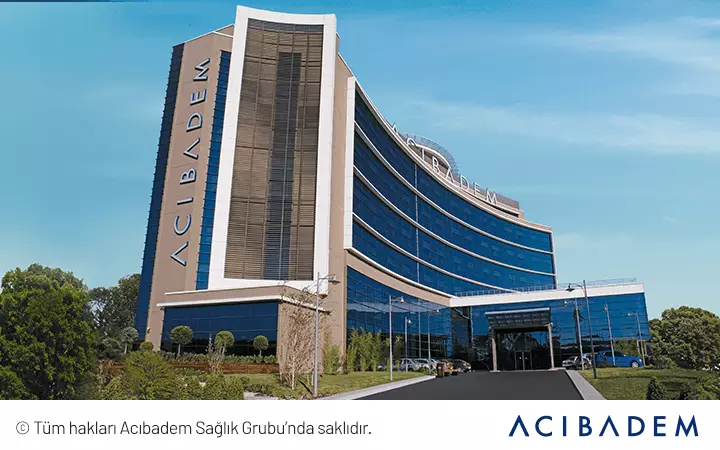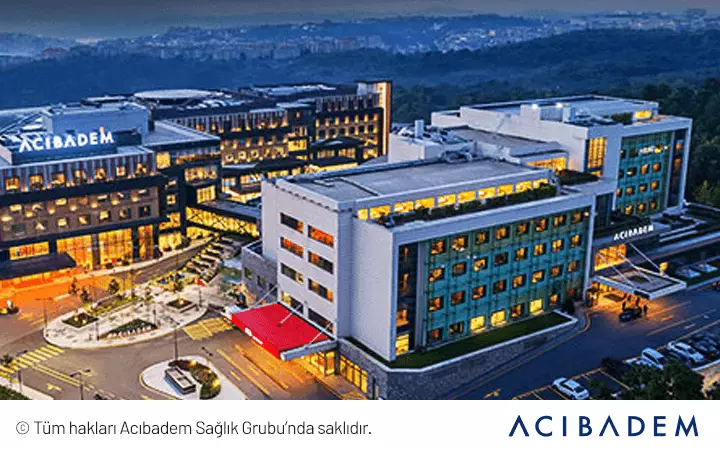Acıbadem Health Group provides therapeutic and diagnostic services through multidisciplinary approach for spine health. Our physicians use most up-to-date approaches to serve patients for diagnosis and treatment of spinal disorders that require or do not require a surgical procedure.
Our specialized physicians use visual and printed material to educate patients along with treatment. Efficiency of clinical pathways is assessed over outcomes of conservative and surgical treatments as well as quality-of-life surveys. Thus, potential adverse effects (complications) are followed up, discussed and prevented.
National and international scientific studies on spine health are supported and efforts are made to promote the scientific literature that will help protection of spinal health and improve treatment of spinal diseases.
Also, international platforms that we also join are consulted for complex, difficult and borderline cases, provided consent is obtained from patients. Our hospitals offer diagnosis and treatment services for spinal diseases of both children and adults.
Scoliosis (abnormally curved spine) and kyphosis (abnormally forward curve of the spine) are treated, while surgical and medical treatment options are provided for treatment of other spinal diseases.
Acıbadem adopts a comprehensive approach in spine health and final decisions on diagnoses and treatments are made by committees of orthopedists, neurosurgeons and physiatrists.
Consisting of a Representative from Each Medical Discipline, Our Clinical Steering Committee Holds Meetings At Quarter Intervals to;
- Determine clinical algorithms or modify them according to results
- Inspect and determine patient reference and triage.
- Detect problems in inter-disciplinary patient referral
- Record statistics on improvement rates and quality-of-life surveys, discuss complications of treatments and detect and take measure for problematic aspects of treatments.
- Determine and assess intra-clinical education programs, scientific research and new techniques.
Spine and Spinal Cord Diseases are Diagnosed and Treated at Our Hospitals. To list a few;
- Pediatric and Adult Spine deformities
- Scoliosis
- Kyphosis
- Spondylolisthesis (a vertebra slipped out on the vertebra below)
- Spondylosis (Stress fractures)
- Posture Disorders
- Spine infections
- Spine injuries-fractures
- Fractures in younger patients
- Osteoporotic fractures
- Spinal cord injuries
- Spine Tumors
- Spinal Cord Tumors
- Pain in back and low back
- Fibromyalgia
- Aging spine diseases
- Low back pain and neck pain
- Herniated lumbar and cervical discs
- Stenotic cervical and lumbar spinal canal
- Degenerative vertebra – lumbar spondylolisthesis
Our hospitals also hold education programs and seminars on spine health and diseases as part of social responsibility project. Public awareness and public education meetings are held for this purpose and visual and printed materials are prepared and distributed.
Our spine is like a bridge between our head and legs and they bear two thirds of our body weight. Our spine consists of 33 bones, called vertebras, including 23 moving vertebrae.
Connective tissues, joints and discs connect these bones to each other. We also have strong muscles around the spine that enable movements and attach to each vertebra.
While our spine appears like a straight line on posterior view, it is curved on lateral view. There are three physiologic curves, namely lordosis (the forward curve in neck), kyphosis (backward curve in thoracic spine) and lordosis (the forward curve in lumbar spine).
Being one of the most critical parts of central nervous system, the spinal cord is located in the spine. Spine surrounds and protects the spinal cord.
Spinal cord is made up of nerve tissue, which ensures communication between the brain and arms, trunk and legs and transmits signals from and to the brain. They act like electric cables for tactile sensation in hands, arms, legs and feet.
Spine also helps us breath and regulates urination and defecation. Our spine enables us to turn our body and head. It protects inner organs. For a healthy spine, one should stand or sit straight up, should not lift heavy objects and ensure correct posture while sitting.
Functions of Spine
- Spine constitutes skeletal system of the trunk, connects head to legs and enables us to stand up.
- It allows forward, backward and sideway bending and rotation thanks to movable joints. Spinal joints, ligaments, muscles and discs act in harmony during movements.
- Spine plays a role in shape of the rib cage. Since it is curved backward in thoracic spine, it provides adequate space for chest organs such as lungs and heart. Also, it collaborates with the rib cage to protect these two crucial organs.
- The motor signals created by brain are transmitted to legs, trunk and arms as well as all body organs by nerve fibers found in the spinal cord that originates from brain and extends to tailbone, also called coccyx. Spinal cord is located in the spinal canal that is created by the hole found at central part of each vertebra stacked on top of each other and thus, it is protected against any kind of trauma.
Anatomy of Spine
While our spine appears like a straight line on posterior view, it is curved on lateral view. There are three physiologic curves, namely lordosis (the forward curve in neck), kyphosis (backward curve in thoracic spine) and lordosis (the forward curve in lumbar spine). There are 33 bones that form the “S” shaped spine.
- 7 cervical (neck) vertebrae
- 12 thoracic (chest) vertebrae
- 5 lumbar (low-back) vertebrae
- 5 sacral (which form the sacrum) vertebrae
- 4 coccygeal (tailbone) vertebrae
Sacral and coccygeal vertebrae are fused below the lumbar spine and on the contrary to other parts of our spine, they are immobile. Vertebrae of cervical, thoracic and lumbar spine are interconnected by a special connective tissue, called disc, which allows movement of the spine and accordingly our body.
This chain of vertebrae allows keeping our trunk erect and creates a frame to allow movement at all directions (bending forward and backward, rotating sideways). Moreover, there is a halo-like bony structure in posterior part of all vertebrae which surrounds and protects the spinal cord.
Why is Spinal Health Important?
Let’s remember functions of the spine: it forms the framework of our body; it allows movements; it plays a role in healthy breathing and proper functioning of our heart; and it transmits signals from brain to muscles that ensure mobility.
Therefore, health of our spine is very important. There are two issues we need to pay attention for a healthy spine. One is protection and economic use; the second one is early detection of unpreventable spinal diseases.
How to Protect Spinal Health?
We should always have a correct posture to prevent overload on our spine as the primary way to protect our spine.
What is Good Posture Habit?
Posture is the position our trunk, arms and legs take while standing, sitting or lying. We can ensure a good posture that will bear minimal load on our spine while standing, sitting or lying.
Good posture;
- Is the position where bones and joints enable muscles work without any difficulty.
- Promotes and maintains three physiological curves of the spine.
- Bears minimal load on or causes least challenge for joints, ligaments and discs that keep vertebrae interconnected.
- Does not cause tiredness quickly.
- Does not lead to pain in your neck, back and low back.
- Creates an aesthetic look.
To have a good posture;
- Muscles around the spine should be strong.
- Your physical condition must be high.
- You need to recognize that you have a poor posture and make all efforts to correct it.
You need to exercise regularly, such as jogging, running, cycling and swimming, and limit the time spent before a computer for strong muscles and high condition.
How should your posture be when standing?
- Keep your head up and look ahead.
- Keep your shoulders in the back.
- Pull your abdomen in.
- Keep your knees straight.
- Keep your chest in the front.
Placing one of your feet on a stool will cause less tiredness, if you need to stand in a stationary position for a long period of time at work.
Moreover, moving or sitting to rest intermittently will eliminate the excessive load on your spine, if you need to stand up in a stationary position for a long period of time while doing a work.
What is ideal sitting position?
- Keep your back straight while sitting.
- Backrest of your chair should be tall; lean your back against the backrest of your chair while sitting.
- Your feet should contact the ground.
- Avoid crossing your legs while sitting.
- Avoid leaning forward when you are in front of a computer; instead, approximate your chair to the table. Lean your back against the backrest and stretch out your arms.
- Keep your shoulders in a relaxed position and avoid leaning forward or upward.
- Height of the screen must be at your eye level. Adjust height of your chair according to the screen.
- Your waist curve should be supported when you lean to the chair. Choose an appropriate chair or use a pillow that supports your waist curve while sitting on your chair.
- Walk around or stretch your muscles in every 30 minutes if you have to sit for a long period of time while working.
Weight Lifting
- Never attempt to lift more than a fourth of your body weight.
- Keep your legs slightly away from each other while lifting a heavy object; keep the weight close to your body, bend your knees to squat position and grasp the object while bending your arms from the elbows.
- Next, lift the object while extending your knees. In this way, you will lift heavy objects with the strength of your legs while not bending your back and straining your spine. Moreover, you prevent your shoulders and back muscles from compressing your spine by bending your elbows while lifting a heavy object and use your arm muscles to bear the load.
- Never lift a heavy object above your waist level.
- Use a trolley even for short distances rather than carrying the object.
- Bend your knees and hips and keep your body straight while lowering a heavy object that you lifted. Use your leg muscles instead of your low back and back muscles.
Bed position
- Maintain physiological curves of your body.
- Put a pillow, which is not too high, under your head and place an object under your knees to elevate them slightly.
- Bend your knees while lying on your flanks and keep a pillow between your legs.
Diseases Which Damage Health of Spine
The two most common of these diseases are scoliosis and kyphosis.
Scoliosis
It refers to abnormal sideway curve of the spine. The spine also twists around itself. This generally occurs in adolescence.
Symptoms ;
- Asymmetric height of shoulders.
- Uneven low back curves.
- Arms not being at equal distance to waist curves when hanging from sides.
- A hump in back or low back which becomes more prominent while bending forward.
Although the exact cause of scoliosis is not known, it is acknowledged that carrying heavy bags, sports branches or poor posture do not lead to scoliosis. It is supposed that genetic predisposition applies to scoliosis. There is no measure that can be taken to prevent scoliosis. However, early diagnosis of scoliosis is crucial.
Increased Hump (kyphosis)
There are two kinds of increased hump;
a) Hump secondary to Posture Disorder
- Our body tends to bend forward (a hump), if we do not make an effort for a good posture, perform exercises which strengthen our back, low-back and abdominal muscles and increase our physical condition.
- his posture leads to getting tired quickly, poor appearance and most importantly loss of spinal health due to excessive load born on our spine.
- Hump secondary to bad posture can be corrected whenever we want.
b) Hump secondary to Structural Disorders of Spine
- This type of hump is related to developmental disorders of our spine and it is not a preventable condition. This generally occurs in adolescence.
- The exact cause is yet to be discovered for this type of hump. However, it is known that the condition does not correlate with carrying heavy bags or bad posture.
- As is the case with scoliosis, you have nothing to do for preventing this type of hump. However, its progression may be stopped, if it is diagnosed early.
Spinal health is important for us to have a pain-free active life without any functional restrictions. The first prerequisite of a healthy spine is a good posture. A good posture minimizes the load which damages and wears off your spine.
A good posture requires attention and effort to exercise regularly and avoid inactive or sedentary life. Some unpreventable spinal diseases (scoliosis, kyphosis) may impair spinal health
Early diagnosis is critical to prevent the severe spinal damage caused by these diseases. It is possible to manage these diseases before they decrease the quality of life, if they are diagnosed early.
Exercises for a Healthy Spine
Which activities are accepted as exercise?
Physical activity implies all body movements which are made by musculo-skeletal system and result in energy consumption. On the other hand, exercises are planned, structured and repeated movements for a certain purpose. Regular exercises are also necessary to prevent various chronic diseases and preserve spinal health along with weight loss and optimal weight.
What are benefits of exercises?
- It prevents chronic diseases such as heart failure, stroke and diabetes.
- It reduces blood pressure into normal ranges.
- It increases the metabolic rate
- It decreases level of cholesterol.
- It facilitates weight control.
- It strengthens muscles, bones and joints.
- It corrects posture disorders.
- It alleviates musculoskeletal system pains.
- It reduces the risk of fall.
- It increases the bone density.
- It boosts energy levels.
- It reinforces the immune system.
- It improves general mood.
- It increases the capacity to think, learn and comprehend.
- It alleviates stress.
- It prevents depression.
- It regulates sleep cycle.
How Is Exercise Program Planned?
Today, exercise is accepted as the most commonly recommended medication due to its therapeutic effect. You need to visit a doctor and make the most appropriate exercise plan for your, before starting exercise.
Frequency, density, time and type of activity should be specified in the exercise plan. People who do not exercise regularly should start with non-strenuous activities and density and duration of activities should be increased gradually. The long-term target should be 30-45 minutes of exercise for 4 to 5 days a week.
There can be different types of exercises such as endurance, strength, flexibility and balance.
How Should We Start Doing Exercises?
Lifestyle should be modified before starting exercise and level of physical activity should be increased thereafter. Walking instead of driving or parking far from your destination, walking in the office, going on a short walk in lunch break, playing with your children, doing chores, using stairs instead of elevator are the activities you can always do.
Moreover, stationary activities should be minimized. Among them are watching television and playing video or computer games.
What are Endurance Exercises?
Aerobic exercises strengthen heart and lungs and improve endurance. Initially, exercise should be done for 20 minutes a day in three days of week and 60% of maximum heart rate should be targeted. As you boost your condition, frequency, duration and density can be increased.
How Are Maximum and Target Heart Rates Calculated?
Maximum heart rate is the number of heart beats reached at maximum exercise level. The formula is 220-age. (For example: For 50 years of age, it is 220-50= 170). Target heart rate is 50-85% of maximum heart rate. Exercise boosts cardiovascular fitness at this level.
The target should be 50-60% of maximum heart rate for beginners and individuals with heart problem and 60-65% in active people. When it starts to be too easy to reach, it is gradually increased and should be 85% at maximum. Heart rate should be periodically measured.
How Is Density of Exercise Determined?
For low-density exercises, target heart rate should be 50-65% of maximum heart rate. Garden works, painting, housework and car wash are examples of these exercises.
Moderately dense exercises require use of large muscle groups such as low-back, trunk, legs and hips. They are done at 65-75% of maximum heart rate. People can talk during this exercise, but cannot sing. Jogging, riding bicycle, tennis, basketball, swimming, dancing and hiking are examples of these exercises.
High-density exercise is recommended for people who do exercises regularly and have reached a certain fitness level. They are done at 75-85% of maximum heart rate. People can say a few words without any pause to breathe during this exercise. Running, ascending stairs fast, spinning, skipping rope and weight trainings are examples of these exercises.
Dense exercise programs should including 5-10 minutes of cool down and warm up periods.
Strength exercises can be done with body weight or resistance bands or various weights. It boosts muscle strength and bone density, improves the posture and decreases the risk of injury.
It accelerates the metabolism and ensures burn of calorie throughout the day. Exercises should be done 2 or more days of week; major muscle groups of legs, hip, back, abdomen, chest, shoulders and arms should be trained.
Each exercise should be repeated 8 to 12 times for each muscle group, but one set can be added or weight can be increased, if a certain exercise becomes too easy. It can be done on the same day with aerobic activity or on a different day. Both aerobic and strength building exercises should be done every week for maximum benefit.
What Are Advantages of Balance Exercises?
Balance exercises decrease risks of fall and disabilities due to fall. These exercises are recommended to be done at least 3 days of week. Walking backwards and to sides, walking on heel and toe tips and standing up from sitting position are examples of the exercises recommended for balance. They can be combined with strength exercises. They can initially be done using a support that should be ceased gradually; at initial phases, eyes can be open, but one may prefer closing eyes thereafter.
What is importance of flexibility exercises?
Muscle shortness is one of the basic conditions that cause pain in spine and joints. It should be included in an exercise program. Body should be warmed up before starting flexibility exercises. They should necessarily be followed by endurance and strength exercises. They should be performed 3 days a week at minimum and every move should be repeated 3-5 times.
Pilates for a Healthy Spine
Pilates for Spinal Health is an exercise system developed by Joseph Hubert Pilates in early 20th century. It is an exercise program which assists keeping the body balanced and controlled through breathing exercises and focuses on muscles which support the spine.
What does Pilates Exercise aim?
Pilates gained popularity recently and it exercises the whole body by combining flexibility and strength exercises. It does not cover rigorous movements. It focuses particularly on paraspinal muscles and balance. It also makes a room for breathing exercises.
It increases both strength and flexibility. It increases the body awareness and mental concentration. It has numerous forms and components; exercises have various difficulty levels.
How Are Pilates Exercises Done?
Pilates exercise requires less repeats combined with full control and a certain form rather than numerous repeats of each move. Individuals should focus well, movements should be fluent and synchronized with breathing. In conclusion, flexibility, strength and physical awareness are increased.
What are Principles of Pilates Exercise?
It is necessary to focus on the movement, pay attention to muscles trained in each move and concentrate on well. It is very important to perform a movement in a controlled manner in accordance with the instructions. Movements are centralized in abdomen, low-back and hips. Movements should be performed fluently and in full range without any need to hurry up. One should breathe very deep and empty lungs completely.
Which Assessments Are Required Before Starting Pilates Exercises?
An examination by a doctor who is experienced in musculoskeletal system problems and sports injuries before starting exercises will lower risk of injury. The outline of exercise program can be determined after the assessment.
It is wise to visit a physiatrist before starting exercises for people who are exercising regularly and have cervicalgia, dorsalgia, lumbalgia or joint ache.
First, the underlying cause of pain should be investigated in order to determine the exercise that will be beneficial. For healthy people, type of exercise, duration, frequency and intensity should be determined by evaluating cardiovascular capacity and physical features.
Who Should Supervise Pilates Exercises?
Pilates exercises should be guided by trained, certified and experienced sports instructors or therapists. The instructor should have joined a comprehensive program and be well educated on human anatomy, sports physiology and potential injuries. An experienced instructor may warn the person for better understanding of a movement, when a certain exercise is done incorrectly.
Are Pilates Moves Good for Spine Health?
Low back pains are mostly secondary to mechanical causes, such as muscle imbalance, weak muscles of low back and abdomen, pelvic instability, posture disorders and erroneous use of body parts.
Pilates exercises will be advantages for low back pain secondary to these causes, as it contributes to strengthening the paraspinal muscles. Patients with low back and neck pain should exercise under supervision of a good instructor only after they are examined by a doctor.
Can Pilates Cause Injury?
Low back and neck pain may worsen, after Pilates exercises are started. The prerequisite to prevent this condition is very strong abdominal muscles. When these muscles are not strong enough, neck and shoulder muscles contract excessively and the spine is overloaded.
Exercise should be modified, if too much load is born on neck and low back. It is very crucial to protect the neutral axis of the spine in moves. The low back will sprain and be exposed to excessive load, if moves are not done correctly. The instructor should have knowledge about these adverse conditions and recommend exercises that protect neck and low back.
Doctors
-
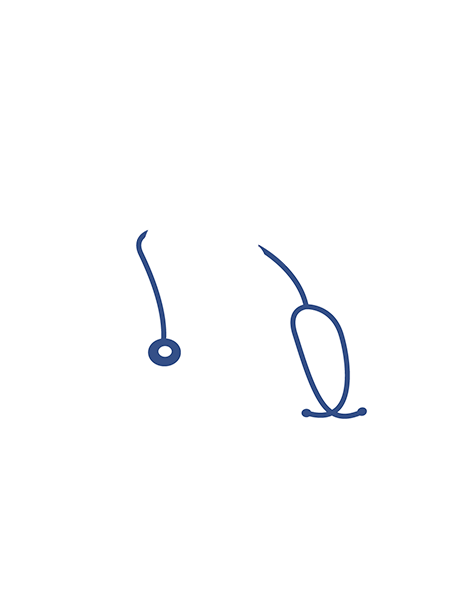 Prof. AHMET ALANAY, M.D.
Spine Health
Prof. AHMET ALANAY, M.D.
Spine Health
Book an Appointment
-
![Prof. ÇAĞLAR YILGÖR, M.D.]() Prof. ÇAĞLAR YILGÖR, M.D.
Spine Health
Prof. ÇAĞLAR YILGÖR, M.D.
Spine Health
Book an Appointment
-
![Prof. FATİH DİKİCİ, M.D.]() Prof. FATİH DİKİCİ, M.D.
Spine Health
Prof. FATİH DİKİCİ, M.D.
Spine Health
Book an Appointment
-
![Prof. KAĞAN TUN, M.D.]() Prof. KAĞAN TUN, M.D.
Spine Health
Prof. KAĞAN TUN, M.D.
Spine Health
Book an Appointment
-
![Prof. KERİM SARIYILMAZ, M.D.]() Prof. KERİM SARIYILMAZ, M.D.
Spine Health
Prof. KERİM SARIYILMAZ, M.D.
Spine Health
Book an Appointment
-
![Prof. MERAL BAYRAMOĞLU, M.D.]() Prof. MERAL BAYRAMOĞLU, M.D.
Spine Health
Prof. MERAL BAYRAMOĞLU, M.D.
Spine Health
Book an Appointment
-
![Prof. REYHAN ÇELİKER, M.D.]() Prof. REYHAN ÇELİKER, M.D.
Spine Health
Prof. REYHAN ÇELİKER, M.D.
Spine Health
Book an Appointment
-
 Prof. SELÇUK PALAOĞLU, M.D.
Spine Health
Prof. SELÇUK PALAOĞLU, M.D.
Spine Health
Book an Appointment
-
![Prof. SERDAR ÖZGEN, M.D.]() Prof. SERDAR ÖZGEN, M.D.
Spine Health
Prof. SERDAR ÖZGEN, M.D.
Spine Health
Book an Appointment
-
![Prof. UFUK AYDINLI, M.D.]() Prof. UFUK AYDINLI, M.D.
Spine Health
Prof. UFUK AYDINLI, M.D.
Spine Health
Book an Appointment
-
![Prof. ZEYNEP GÜVEN, M.D.]() Prof. ZEYNEP GÜVEN, M.D.
Spine Health
Prof. ZEYNEP GÜVEN, M.D.
Spine Health
Book an Appointment
-
![Assoc. Prof. ALTUĞ YÜCEKUL, M.D.]() Assoc. Prof. ALTUĞ YÜCEKUL, M.D.
Spine Health
Assoc. Prof. ALTUĞ YÜCEKUL, M.D.
Spine Health
Book an Appointment
-
![Assoc. Prof. BARAN BOZKURT, M.D.]() Assoc. Prof. BARAN BOZKURT, M.D.
Spine Health
Assoc. Prof. BARAN BOZKURT, M.D.
Spine Health
Book an Appointment
-
![Assoc. Prof. MURAT KİRAZ, M.D.]() Assoc. Prof. MURAT KİRAZ, M.D.
Spine Health
Assoc. Prof. MURAT KİRAZ, M.D.
Spine Health
Book an Appointment
-
![BETÜL TOYGAR, M.D.]() BETÜL TOYGAR, M.D.
Spine Health
BETÜL TOYGAR, M.D.
Spine Health
Book an Appointment
-
![HACER YÜKSEL, M.D.]() HACER YÜKSEL, M.D.
Spine Health
HACER YÜKSEL, M.D.
Spine Health
Book an Appointment
-
![NİLGÜN ÇAVDAR, M.D.]() NİLGÜN ÇAVDAR, M.D.
Spine Health
NİLGÜN ÇAVDAR, M.D.
Spine Health
Book an Appointment
-
![Physiotherapist AYLİN KURT]() Physiotherapist AYLİN KURT
Spine Health
Physiotherapist AYLİN KURT
Spine Health
Book an Appointment
-
![Physiotherapist GİZEM ERBİL]() Physiotherapist GİZEM ERBİL
Spine Health
Physiotherapist GİZEM ERBİL
Spine Health
Book an Appointment
-
![Physiotherapist GÖNÜL ZERVENT]() Physiotherapist GÖNÜL ZERVENT
Spine Health
Physiotherapist GÖNÜL ZERVENT
Spine Health
Book an Appointment
-
![Physiotherapist MURAT ÖZEL]() Physiotherapist MURAT ÖZEL
Spine Health
Physiotherapist MURAT ÖZEL
Spine Health
Book an Appointment
Medical Technologies
Hospitals
-
![Altunizade Hospital]() Altunizade Hospital
Altunizade Hospital -
![Ankara Hospital]() Ankara Hospital
Ankara Hospital -
![Atakent Hospital]() Atakent Hospital
Atakent Hospital -
![Ataşehir Hospital]() Ataşehir Hospital
Ataşehir Hospital -
![Dr. Şinasi Can (Kadıköy) Hospital]() Dr. Şinasi Can (Kadıköy) Hospital
Dr. Şinasi Can (Kadıköy) Hospital -
![Eskişehir Hospital]() Eskişehir Hospital
Eskişehir Hospital -
![Maslak Hospital]() Maslak Hospital
Maslak Hospital




